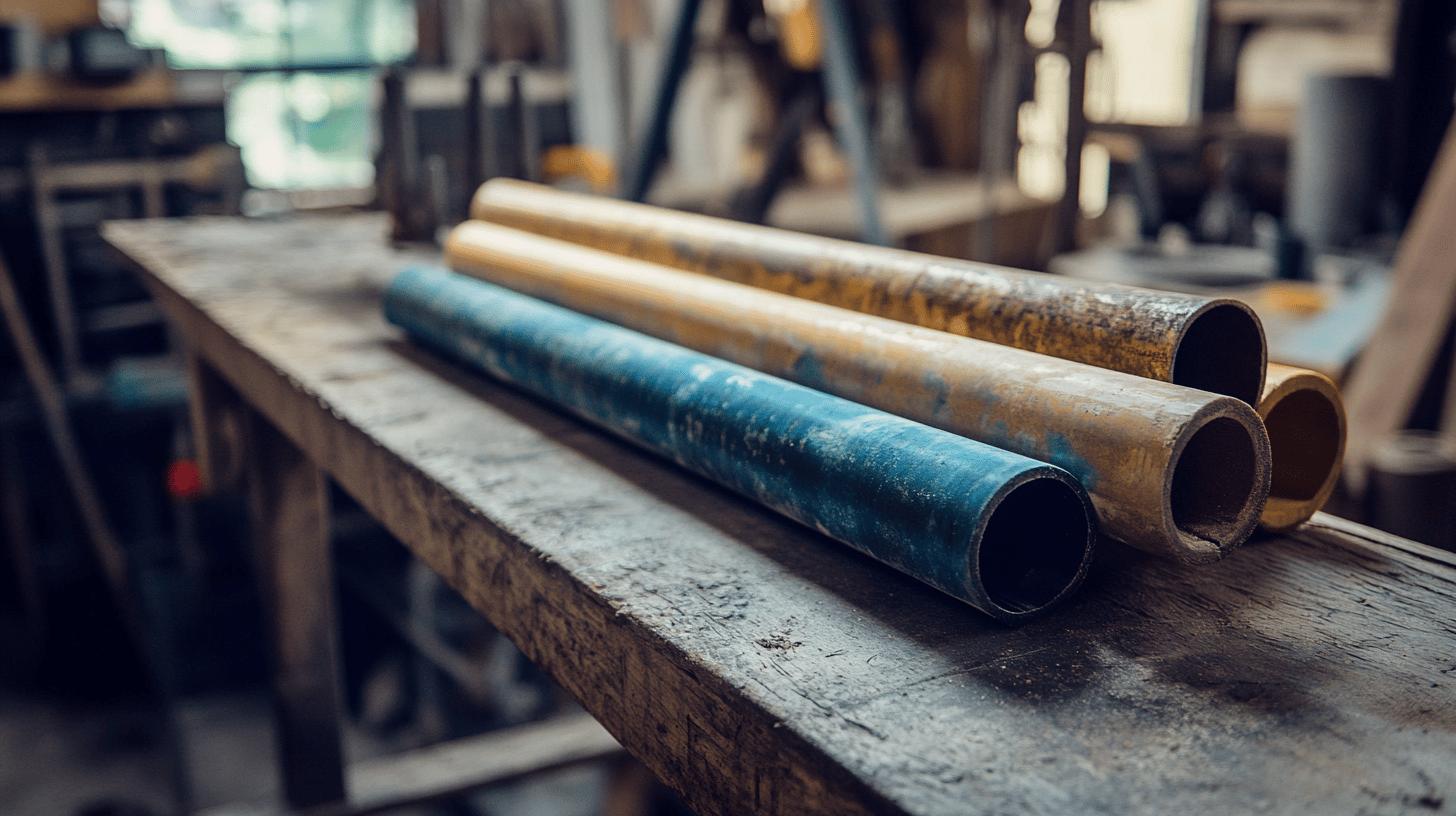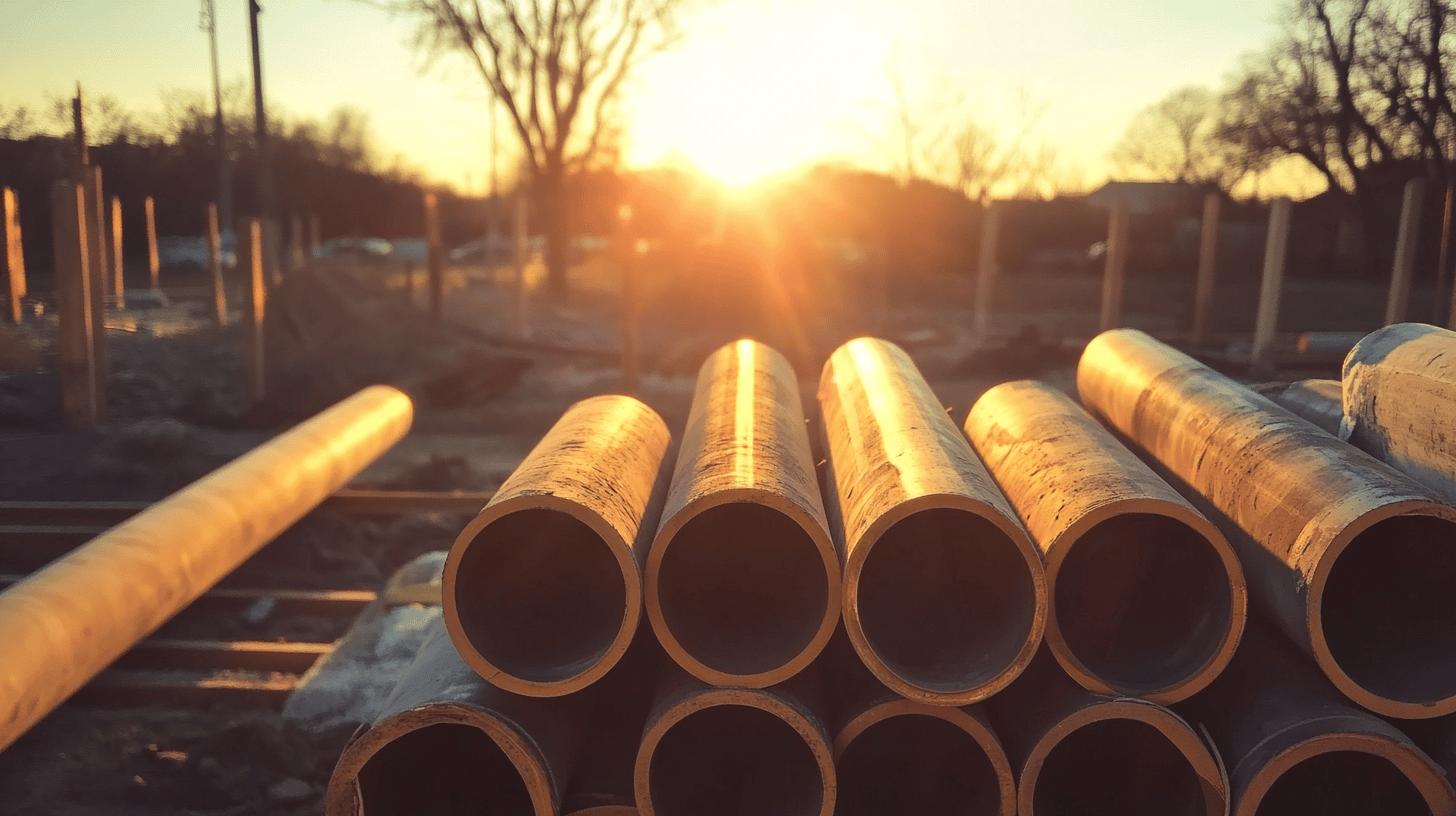TL;DR:
- Schedule 40 vs. Schedule 80: Schedule 80 has thicker walls, higher pressure rating; Schedule 40 is thinner and more affordable.
- Applications:
- Schedule 40: General plumbing, low-pressure.
- Schedule 80: Industrial, high-pressure use.
- CPVC: Suitable for hot water due to better temperature resistance.
- PVC-U: Durable, used for drinking water, fully recyclable.
- Benefits of PVC: Durable (up to 100 years), cost-effective, environmentally friendly.
- Drawbacks: UV susceptible, limited in extreme climates.
- Factors for choosing PVC: Thickness (pressure), diameter (flow rate), application (utility), climate conditions (freeze-thaw resistance).
When you’re working on home projects, picking the right type of PVC pipe can be tricky. Have you ever thought about which PVC pipe is best for your needs? Whether you’re doing a simple plumbing fix or setting up an irrigation system, the type of PVC you choose really matters for how well it performs and how long it lasts. This article breaks down the differences between Schedule 40 and Schedule 80 PVC pipes, focusing on things like wall thickness and pressure rating. You’ll learn what makes each type special and get expert tips for high-pressure situations. Let’s make sure your next project starts and finishes successfully!
Comparing Schedule 40 and Schedule 80 PVC Pipes
When picking PVC pipes, you’ll often hear about Schedule 40 and Schedule 80 because they have different structures and uses. The biggest difference is their wall thickness: Schedule 80 pipes have thicker walls, which makes them stronger and better for high-pressure jobs. This added thickness gives Schedule 80 a higher pressure rating, making it ideal for tough environments. On the other hand, Schedule 40 pipes are thinner and cheaper, making them a good choice for everyday, low-pressure tasks.
Here’s a quick comparison:
- Wall thickness: Schedule 80 is thicker.
- Pressure rating: Schedule 80 withstands more pressure.
- Applications:
- Schedule 40: Ideal for non-pressurized and general plumbing.
- Schedule 80: Best for industrial and high-pressure uses.
When it comes to yard drainage in colder climates, Schedule 40 isn’t the best option because it’s more likely to crack from freeze-thaw cycles. Schedule 80, on the other hand, is much better at handling these conditions due to its strength and thicker walls. Experts recommend using Schedule 80 for high-pressure situations because it offers more reliability and durability, making it perfect for industrial applications where performance really matters.
Understanding CPVC and PVC-U Pipes

Choosing the right pipe type is crucial, and understanding the differences between CPVC and PVC-U can help you make an informed decision. While both are popular options, they serve different purposes based on their unique characteristics.
CPVC Pipes
What is CPVC? CPVC, or Chlorinated Polyvinyl Chloride, is great for hot and cold water applications because it can handle higher temperatures better than regular PVC. It’s ideal for plumbing systems where warm water is common, like hot water lines, since it stays strong even when exposed to heat.
PVC-U Pipes
What is PVC-U? PVC-U stands for unplasticized Polyvinyl Chloride. These pipes are known for their durability and are commonly used for drinking water and waste transport. They’re strong and rigid, resistant to corrosion and chemical leaching. A key benefit of PVC-U is that it’s 100% recyclable, making it an environmentally friendly option.
When it comes to environmental impact, PVC-U’s recyclability gives it an advantage. While CPVC works well in hot conditions, PVC-U’s sustainability and durability make it a more eco-friendly choice for many water systems.
Exploring PVC Pipe Applications: Plumbing, Irrigation, and More
Why are PVC pipes so versatile? It’s because they’re lightweight, durable, and cost-effective, making them perfect for plumbing, irrigation, sewage, and industrial applications. These qualities allow them to adapt to different conditions, which is why they’re a go-to choice in construction and maintenance.
Consider the advantages in these applications:
| Application | Benefits |
|————-|———-|
| Plumbing | Lightweight, corrosion-resistant, easy to install, cost-effective, durable for residential and commercial systems. |
| Irrigation | Highly flexible, durable for long-lasting use in agricultural irrigation and landscaping. |
| Sewage | Strong, chemical-resistant, smooth interior to reduce blockages, ensuring efficient flow. |
| Industrial Use | Can handle varied chemicals and pressures, making them suitable for transporting industrial fluids under tough conditions. |
Pick the right type of PVC for your project. Schedule 40 works well for most residential plumbing, while Schedule 80 is best for high-pressure commercial tasks. Flexible PVC is ideal for complex irrigation systems, and sewage systems need sturdy, corrosion-resistant PVC-U. For industrial applications, choose based on chemical and pressure needs.
Choosing the correct PVC type ensures your system performs well and lasts longer. It’s a good idea to consult with professional plumbers for more insights on what works best for your specific needs.
Benefits and Drawbacks of PVC Pipe Types

Why are PVC pipes so popular? They’re durable, cost-effective, and eco-friendly, making them a great choice for a wide range of applications. Here are some key advantages:
- Durability: Often lasting up to 100 years due to resistance to corrosion and degradation.
- Cost-effectiveness: More affordable to buy and install, saving money over the system’s lifetime.
- Environmental friendliness: Fully recyclable, reducing waste and conserving resources. Low carbon footprint in production.
However, they do have drawbacks:
- UV susceptibility: Degrades with sun exposure over time, compromising integrity, making them less ideal for long-term outdoor use without protection.
- Limitations in extreme climates: Rigid and may crack under temperature stress, making them less suited for harsh climates.
Experts recommend choosing PVC pipes based on the specific environment and application needs. For indoor use, you can take full advantage of their benefits, while outdoor applications may require UV protection. In extreme temperatures, alternative materials might be necessary to prevent thermal stress issues. Consulting with professionals can help ensure you select the right type of PVC for each situation.
Choosing the Right PVC Pipe: Factors to Consider
Choosing the right PVC pipe is essential for ensuring your system’s efficiency and longevity. The best type for your project depends on factors like thickness, diameter, and environmental conditions. Here are some things to keep in mind:
-
Thickness: Affects pressure rating and durability. Schedule 80 is best for high pressure, while Schedule 40 suffices for less demanding areas.
-
Diameter: Determines flow rate and volume. Larger diameters suit high-flow systems, whereas smaller ones fit residential plumbing.
-
Application: Different uses need specific pipes. For example, SDR35 PVC is often used for yard drainage in milder climates due to its rigidity and affordability.
- Climate Conditions: Temperature changes affect pipe performance. Pipes that withstand freeze-thaw cycles are essential in colder climates.
| Factor | Considerations |
|——————–|——————————————————————————–|
| Thickness | Choose based on pressure; thicker for high-pressure systems. |
| Diameter | Match with system flow needs. |
| Application | Select based on use, like drainage, plumbing, or irrigation. |
Professional plumbers play a vital role in helping you choose the right pipes. They ensure that your selections are based on the specific application and environment, which enhances the performance and durability of your plumbing system.
Final Words
When you dive into the various types of PVC pipes, you’ll discover their unique specifications and uses. Each type, like Schedule 40 and Schedule 80, is designed for specific applications. By grasping the pros and cons, you can make smart choices for your projects.
When deciding on the best PVC pipe, consider factors such as application requirements and environmental conditions. Rely on professional advice to get the best results. With the right selection, you’ll achieve efficient and durable solutions for your plumbing and irrigation needs.
FAQ
Q: Which type of PVC pipe is best for plumbing?
A: Schedule 40 PVC is widely used for general plumbing due to its cost-effectiveness. For hot water lines or higher pressure, CPVC is recommended because of its higher temperature resistance.
Q: What are the different types of PVC pipes?
A: Common PVC types include Schedule 40, Schedule 80, CPVC, and PVC-U. Each type has different wall thickness and suitability for varying pressures and temperatures.
Q: Can plastic piping be threaded?
A: Yes, certain plastic piping, such as Schedule 80 PVC, can be threaded, allowing for easy connections in various systems.
Q: What do PVC pipe class labels A, B, C mean?
A: PVC pipe classes indicate pressure ratings. Class A supports lower pressure than Class C, with wall thickness and strength increasing from A to C.
Q: Are there different grades of PVC pipe, and what is the strongest?
A: Yes, there are different grades. Schedule 80 PVC is the strongest due to its thicker walls, making it ideal for high-pressure applications.
Q: Which pipe is better, UPVC or CPVC?
A: For hot water systems, CPVC is better as it resists higher temperatures. UPVC is more suitable for cold water, drainage, and is environmentally friendly due to its recyclability.
Q: What is the difference between Type A and Type B PVC pipe?
A: Type A and Type B mainly differ in wall thickness and pressure handling capacity. Type B has thicker walls compared to Type A, making it suitable for higher pressure applications.

